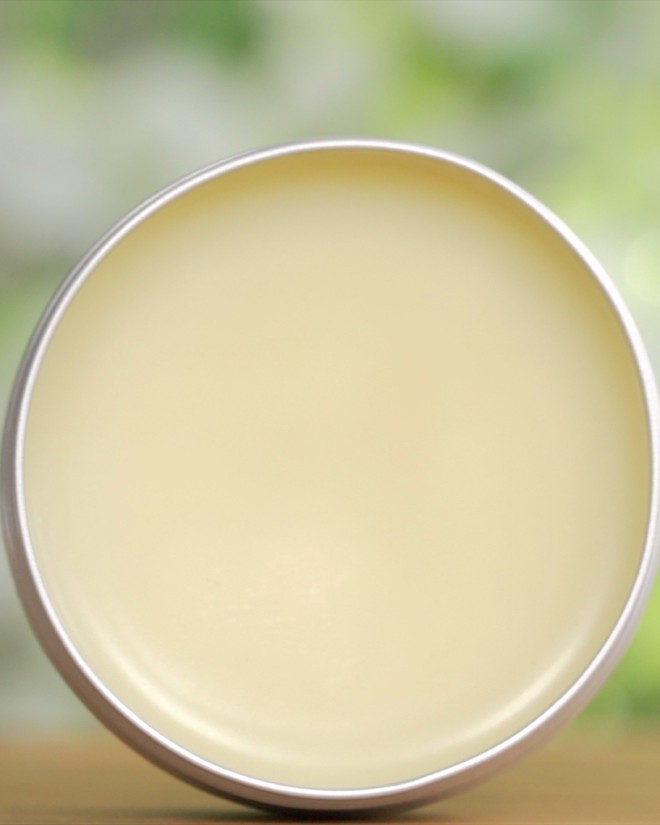Part of the Essential Balm Products series.
Recipe
Heated Phase
- 70.5g Marula Oil
- 45g Ayurvedic Oil
- 15g Extra Virgin Coconut Oil
- 10.5g Candelilla Wax
- 9g Beeswax
Cool Down
- 1.5g Vitamin E Oil (Antioxidant)
- 1.5g Essential Oils (Suggested mix: Tea tree, Rosemary, Peppermint & Lavender)
Method
- Measure out your heated phase ingredients: Mafura Oil, Ayurvedic Oil, Extra Virgin Coconut Oil, Candelilla Wax and Beeswax. Combine in a heatproof container.
- Gently melt your ingredients over low heat using either a bain-marie or double boiler.
- Once liquid, leave to cool at room temperature until only slightly warm but still molten.
- Add your cool down ingredients: Vitamin E Oil and any Essential oils you’d like for fragrance.
- Pour directly into tub-style containers and allow to set either at room temperature for a minimum of 12 hours or in the refrigerator.
This recipe makes 150g of Hair & Scalp Balm, and should last for approximately 12 months. See the interactive formula to customise this recipe.
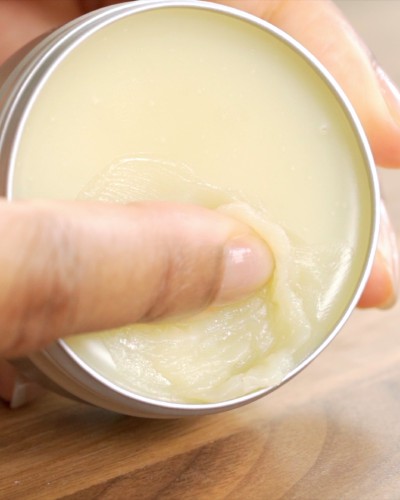
How to make non-greasy hair balm
Hair balms mostly consist of oil and wax. They appear solid at first but melt into a liquid oil that easily coats and reinforces your hair strands. But this can be tricky to get right! If not balanced correctly hair balms can feel greasy to the touch and weigh down your hair.
To make a non-greasy hair balm, it’s all about understanding which wax and oils to use.
Which wax should you use in hair balm?
All waxes are essentially the same right? Well no, they’re actually quite different. It’s common to find formulas that use beeswax interchangeably with candelilla, soy or any other type of wax, but in practice this can have a huge impact on the final texture.
The main difference between types of wax is the melting point. Higher melting point waxes such as candelilla wax or carnurba wax are known as “hard wax”.
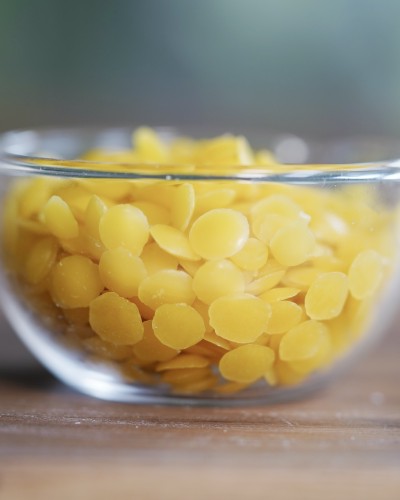
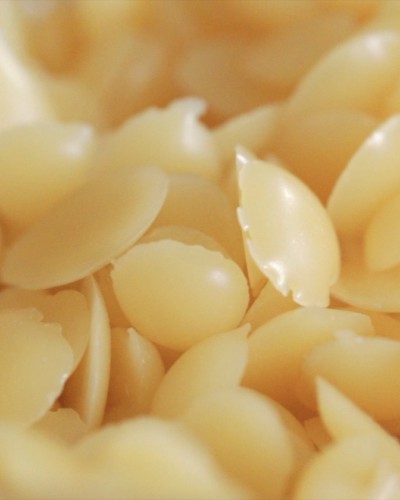
- Candelilla wax is the main wax in this hair balm formula. It ensures the balm stays solid due to its high melting point but it also has a non-greasy, high shine finish that’s perfect for hair balms
- Beeswax is the secondary wax to provide softness and flexibility to the hair balm. By itself beeswax is too tacky and can feel greasy on the hair. When combined with candelilla wax, it stops the balm being too hard and allows it to melt faster when applied to hair.
How to make scalp balm
Creating a balm that can be applied to both your hair and scalp is no easy feat!
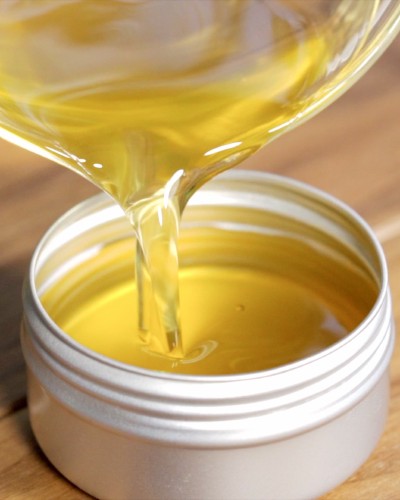
Scalps can be incredibly sensitive, so it’s necessary to use oils that are nourishing but still light enough to not cause irritation or build up. Not all oils are suitable to apply to the scalp. Due to this scalp balm being a leave on product, there are a number of elements that you should consider. A good scalp balm should have:
- Antibacterial & anti-inflammatory properties
- Anti-dandruff and soothing properties
- Fast absorbing, lightweight oils that reduce the chance of build up
This hair & scalp balm recipe uses marula oil that is known as a “dry oil” for its rapid penetration and non greasy application. It’s both moisturising and conditioning, completely absorbing into the hair and scalp, leaving no residue. For more information on marula oil, including other oils that have great benefits for you hair, see my lightweight hair oil recipe.
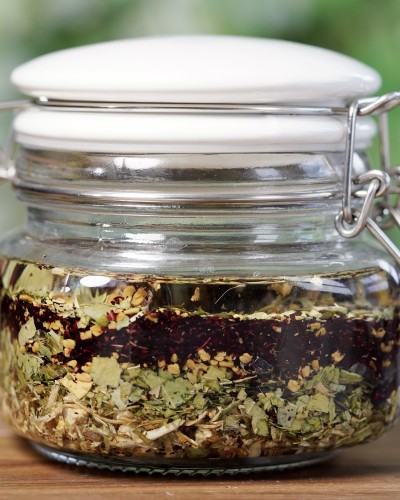
How to use hair & scalp balm
A little goes a long way with this hair balm so always apply a small amount at a time! Taking a small amount, rub the balm between your palms or fingers until liquid and viscous. Apply to the ends of your hair first, working up through the shaft until completely disperesed. To use as a scalp treatment, gently massage throughout your scalp in circular motions until the balm has fully absorbed. This hair and scalp balm can be used in a variety of ways, here a few of its uses and benefits:
- Reduce the appearance of split ends: apply a hair balm to the ends of your hair to keep strands smooth and impart shine
- Reduce frizz and tame flyaways: the balm has a small amount of hold that can be used to increase manageability and reduce the appearance of frizz and flyaways
- Improve hair’s shine & lustre: coats hair with a wafer thin gloss that imparts shine and locks moisture into strands
- Soothes scalp and reduces itchiness: packed full of anti-inflammatory and antibacterial properties that eases scalp conditions
- Reduces dandruff: provides deep penetrating moisture that instantly reduces the appearance of dandruff and flakes, whilst simultaneously moisturising the scalp to prevent future dry skin conditions
- Stimulates hair growth and thickness: infused with the hair-revitalising properties of Ayurvedic herbs and botanical extracts
